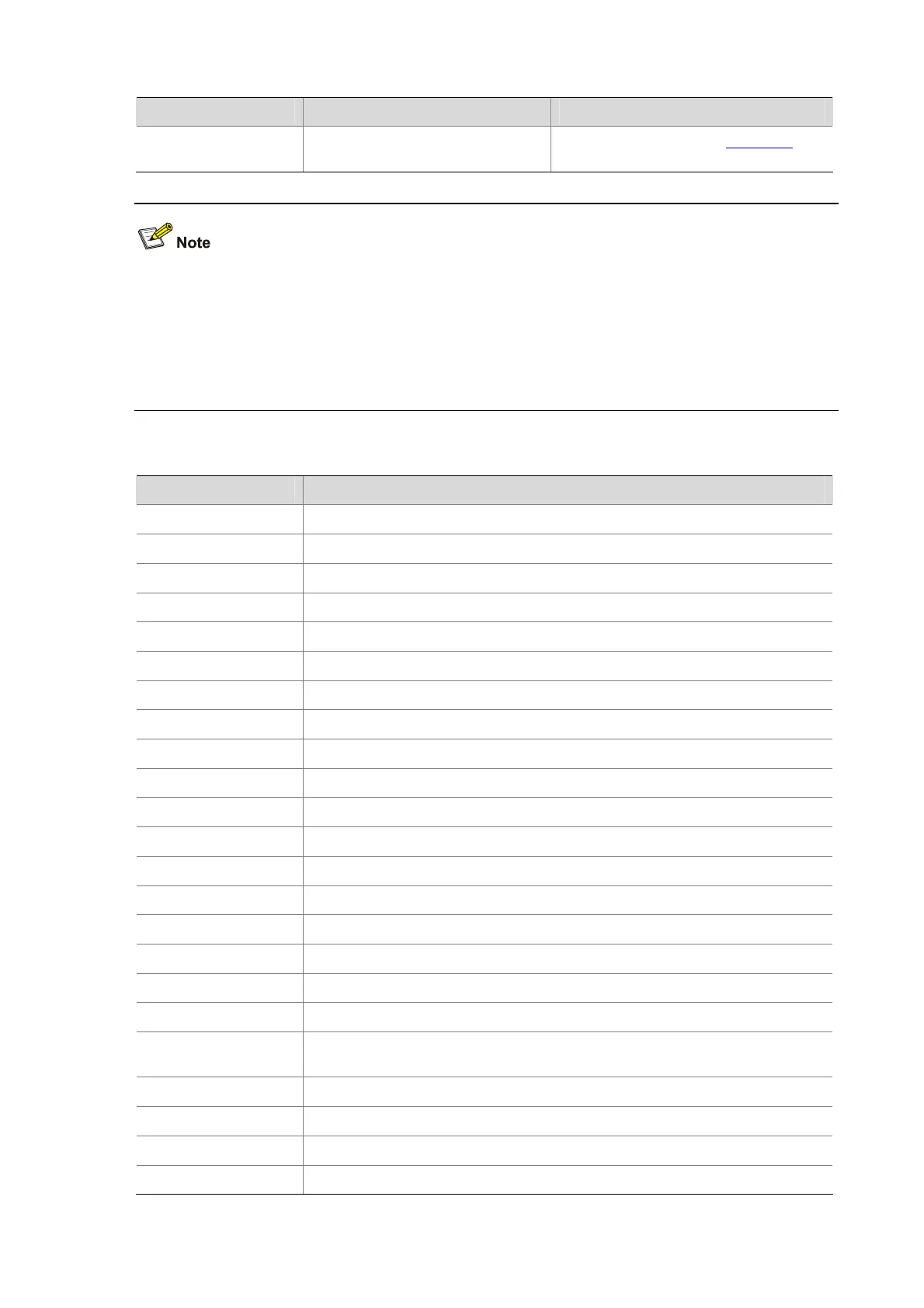11-8
To do… Use the command… Remarks
Display hotkeys
display hotkey
Available in any view. See
Table 11-2 for
hotkeys reserved by the system.
By default, the Ctrl+G, Ctrl+L and Ctrl+O hotkeys are configured with command line and the Ctrl+T
and Ctrl+U commands are NULL.
z Ctrl+G corresponds to the display current-configuration command.
z Ctrl+L corresponds to the display ip routing-table command.
z Ctrl+O corresponds to the undo debugging all command.
Table 11-2 Hotkeys reserved by the system
Hotkey Function
Ctrl+A
Moves the cursor to the beginning of the current line.
Ctrl+B
Moves the cursor one character to the left.
Ctrl+C
Stops performing a command.
Ctrl+D
Deletes the character at the current cursor position.
Ctrl+E
Moves the cursor to the end of the current line.
Ctrl+F
Moves the cursor one character to the right.
Ctrl+H
Deletes the character to the left of the cursor.
Ctrl+K
Terminates an outgoing connection.
Ctrl+N
Displays the next command in the history command buffer.
Ctrl+P
Displays the previous command in the history command buffer.
Ctrl+R
Redisplays the current line information.
Ctrl+V
Pastes the content in the clipboard.
Ctrl+W
Deletes all the characters in a continuous string to the left of the cursor.
Ctrl+X
Deletes all the characters to the left of the cursor.
Ctrl+Y
Deletes all the characters to the right of the cursor.
Ctrl+Z
Exits to user view.
Ctrl+]
Terminates an incoming connection or a redirect connection.
Esc+B
Moves the cursor to the leading character of the continuous string to the left.
Esc+D
Deletes all the characters of the continuous string at the current cursor position and
to the right of the cursor.
Esc+F
Moves the cursor to the front of the next continuous string to the right.
Esc+N
Moves the cursor down by one line (available before you press
Enter
)
Esc+P
Moves the cursor up by one line (available before you press
Enter
)
Esc+<
Specifies the cursor as the beginning of the clipboard.

